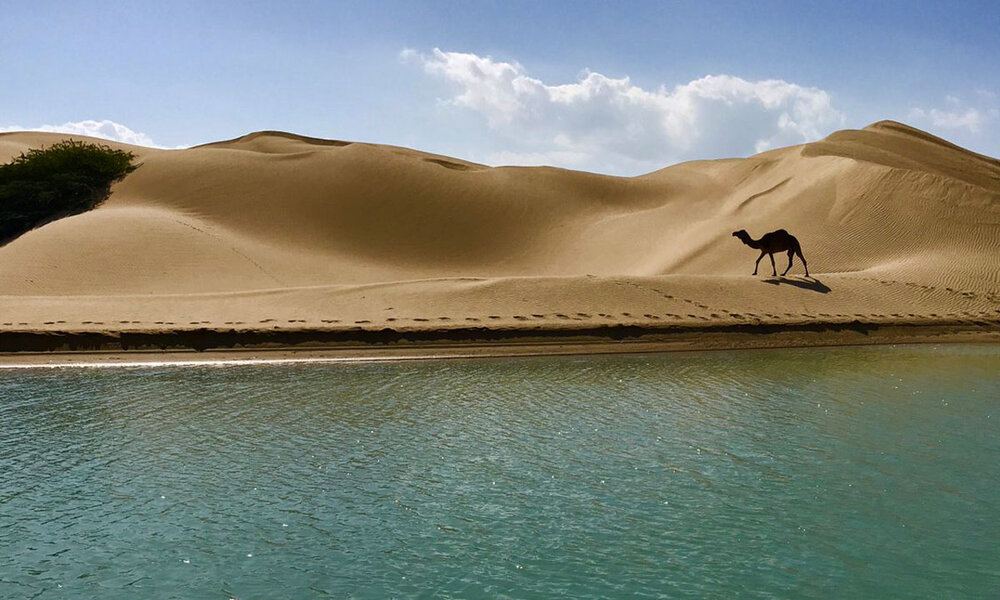Sistan-Baluchestan: A must-see destination in southeast Iran

TEHRAN – UNESCO sites both historical and natural, varied landscape, cozy guesthouses, rugged sea coasts, mouth-watering local dishes, reasonable prices, and above all, hospitable and welcoming people well contribute to make the lesser-known Sistan-Baluchestan a must-visit destination for any traveler to Iran.
The collective Sistan-Baluchestan Province -- Sistan in the north and Baluchestan in the south -- accounts for one of the driest regions of Iran with a slight increase in rainfall from east to west, and an obvious rise in humidity in the coastal regions. In ancient times, the region was a crossword of the Indus Valley and the Babylonian civilizations.
The province possesses special significance because of being located in a strategic and transit location, especially Chabahar which is the only ocean port in Iran and the best and easiest access route of the middle Asian countries to free waters.
For mainstream Iranians, the name of Sistan-Baluchestan conjures up stories of drought, desiccated wetlands, and dust storms. On the international scale, foreigners may consider it a reminiscent of the big red blot on the Iran safety map.
The vast province is home to several distinctive archaeological sites and natural attractions, including two UNESCO World Heritage sites, namely Shahr-e-Soukhteh (Burnt City) and Lut desert.
Some of the most notable historical and natural tourist attractions of the province are as follows:
Seb castle
The historical Seb castle stands tall in a village of the same name, the castle was extensively used during the Qajar era (1789–1925) as a borderline surveillance base. However, narratives say that its heyday dates back to the time of the Safavids (1501–1736).
The castle is constructed of clay and mortar blend with loads of sticky plant seeds. In some parts wooden slabs cut from palm trees have been used to strengthen the overall layout, enabling it to withstand the natural disasters in particular mellow seismic vibrations.

A view of the centuries-old Seb castle in Sistan-Baluchestan province
Mud fountains
Mud fountains are one of the most amazing phenomena and tourist attractions of the province. There are three Mud fountains in this area that are located in Kahir, Konarak, and Khash, two of them are in the form of a hill and the other is a volcano.
Darak beach
It is in fact an amazing place where intersection a thirsty desert meets the sea. Darak beach and a nearby village are a destination for avid nature lovers. The beach and the amazing village of Zarabad, along with the Oman Sea, are where sand dunes, palm trees and blue sea in a frame together create picturesque sceneries.
Darren Negaran
Darren Negaran (literally meaning illustration of the valley) is home to tens of carved pictures of different animals such as wild cows, camels, and antelopes with a large horn in a variety of styles that are drawn in most of the scenes. Some say it’s the largest stone gallery of the country. Hunters’ motifs, men’s conflicts with each other and the images of moon and sun are other subjects of these ten thousand years old stones illustrations.
Chabahar beach
Chabahar is the only oceanic port of Iran and it is attached to the Sea of Oman and the Indian Ocean. In the southern part of the Chabahar city, there are large rocks with the advent of seawater and erosion of sedimentary rocks that have created a beautiful landscape. Sunset and sunrise on this beach are one of the most spectacular views that you may have in your life. Do not miss these beautiful beaches during your Iran tour.
Martian mountains
About 40 to 50 kilometers away from Chabahar, lies one of the wonders of Iran’s nature known as the Martian mountains or miniature. Also, it is called Kalani or Aria in the local language. Along the roadside, you can see another planet in front of you that can be easily touched.
Colors of the Martian mountains varies from gray to white and displays different colors during the day due intensity of the daylight. This 4-5 million years old mountainous area features hills from 5-meter-high to the ones rising over 100 meters.
AFM/MG
Leave a Comment